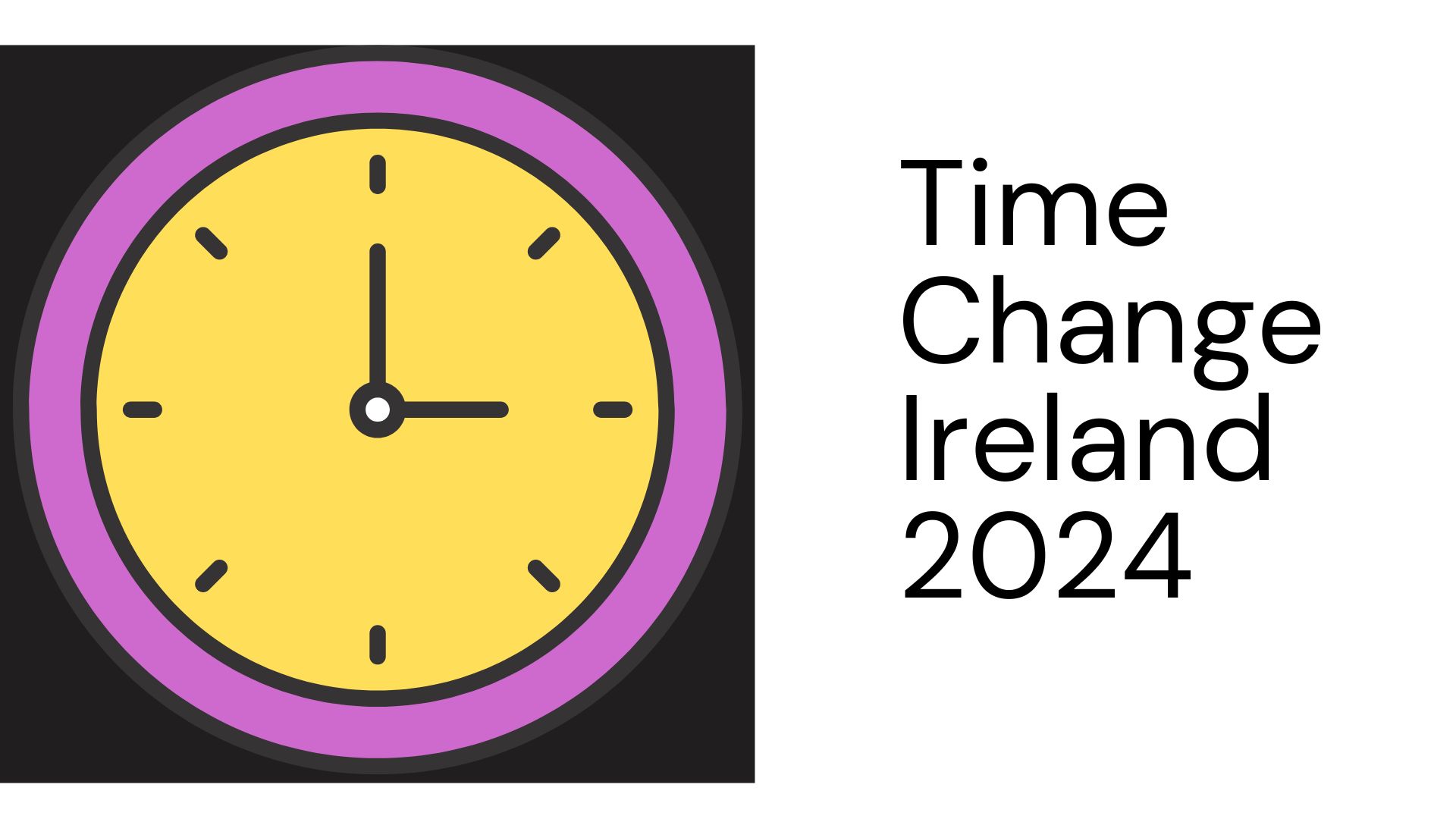As we struggle to figure out how to adjust the time on our cars and appliances, it’s natural to wonder what the point of daylight savings time is and when it could stop.

When will the clocks change in 2024?
In Ireland, the clocks are set forward on the last Sunday of March, which falls on Easter Sunday this year. Simply put, at 1 a.m. on March 31, 2024, the clock will change to 2 a.m. On the last Sunday in October (October 27, 2024), the clocks will ‘fall back’ an hour at 2 a.m.
Where else do clocks change?
As per EU rules, clocks in all member states shift simultaneously. The European Parliament voted in 2019 to halt seasonal time changes. Still, EU institutions have yet to execute the decision, and the European Commission has stated that it does not intend to submit a new proposal to the Parliament. Furthermore, the Department of Justice has expressed worry that the UK’s exit from the EU may result in two different time zones on the island of Ireland. In Canada, daylight savings time (DST) begins at 2:00 a.m. on the second Sunday of March and ends on the first Sunday in November.
On the first Sunday in October, New South Wales, Victoria, South Australia, Tasmania, and the Australian Capital Territory advance their clocks one hour to 2 am (Australian Eastern Daylight Time). They return an hour at 3 a.m. on the first Sunday in April. Queensland, Western Australia, and the Northern Territory do not observe daylight saving time. Therefore, there will be no gain or loss of one hour. At the time of writing, most of the United States observes DST, except Arizona, Hawaii, and the overseas territories of American Samoa, Guam, the Northern Mariana Islands, Puerto Rico, and the United States Virgin Islands.
Why do clocks change?
The clocks adjust to make the most use of natural light as the Earth orbits the sun, adjusting its exposure. In the winter, when it’s naturally darker, time is set back an hour, giving you an extra hour to spend in bed. However, in the summer, we enjoy the much-touted ‘great stretch in the nights’ when the clocks move forward. The effect of the adjustment varies, with countries farther from the equator seeing more hours of darkness benefiting the most from the system.
Where did it all begin?
In 1895, a New Zealander named George Hudson allegedly developed the concept to give him more time for hobbies after work. By changing the clock by two hours, the scientist anticipated to be able to spend more time outside in the evening searching for insects.
In Britain, a guy named William Willett, endorsed by Winston Churchill, proposed using natural light to its full potential. He wanted more time to enjoy the outdoors in the evenings and complained to the British government that Londoners were sleeping away much of the summer light. However, the British government did not listen, and his proposal was rejected. The notion resurfaced shortly after his death when governments attempted to minimize coal consumption during World War I by increasing daylight hours.
Could Daylight Saving Time be phased out?
On March 26, 2019, the European Parliament voted to end Daylight Saving Time permanently in 2021. Much of this conclusion was based on an EU-wide survey, in which most respondents stated that they would instead terminate the procedure.
This result may be skewed because Germany accounted for 70% of all responses, followed by France and Austria. However, the vote and poll are not final and must be reviewed with EU member states before becoming EU law. The draft directive would let member states choose whether to remain in “permanent summer” or “permanent winter” time. The last clock change was scheduled for Spring 2021, but the idea was postponed while the globe dealt with the COVID-19 pandemic. As things stand, EU institutions have made no progress in implementing the decision, and the European Commission has stated that it does not intend to submit a new proposal on the subject to the Parliament, implying that no modifications would be made in 2024.